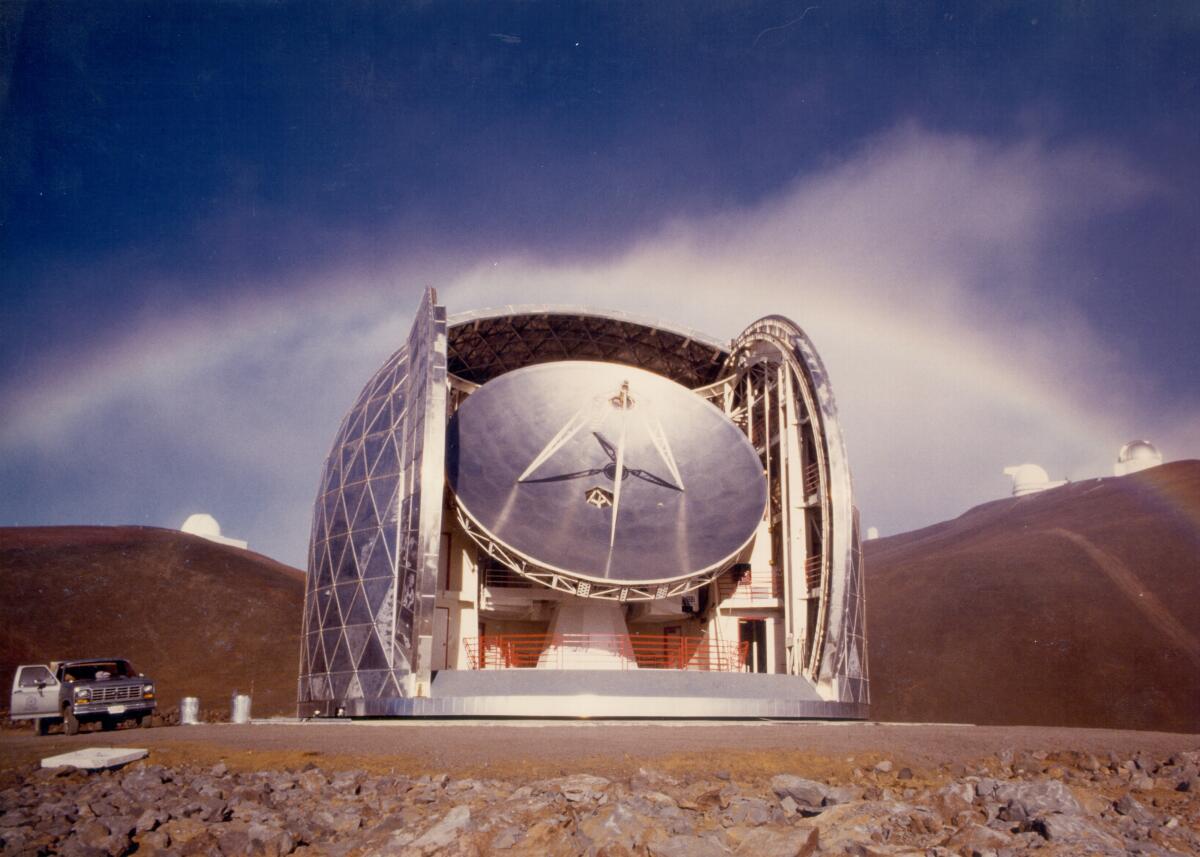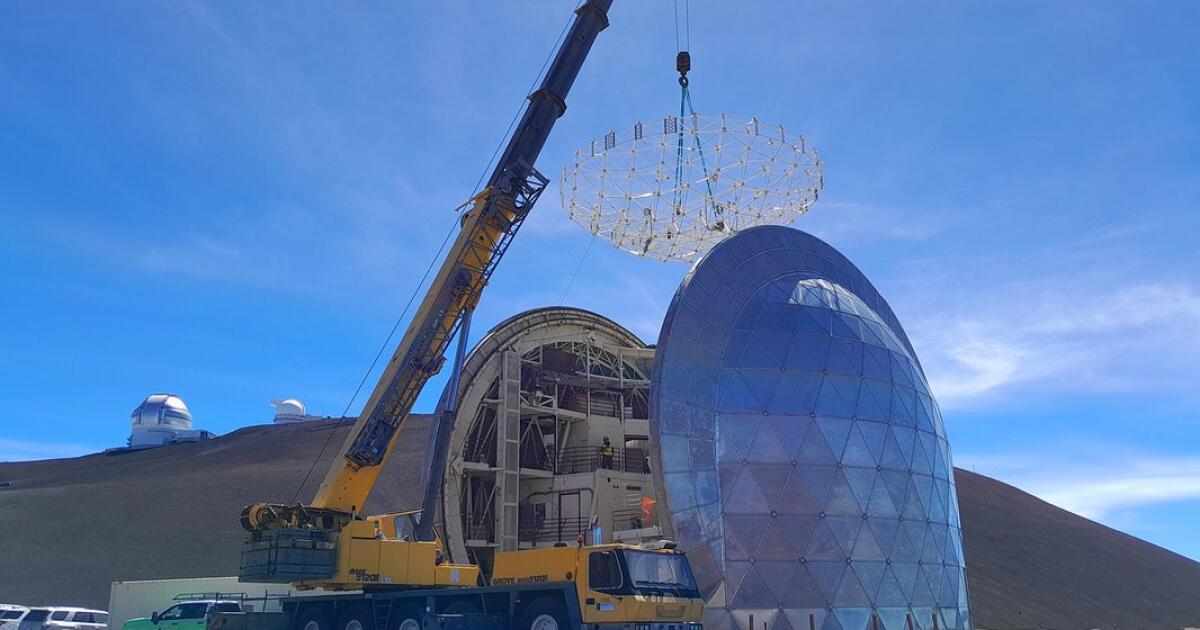After decades of mounting tension between scientists and native Hawaiians, Caltech has completed its removal of a telescope from the summit of Maunakea, a dormant volcano that is revered by the island’s Indigenous population.
The decommissioning of the Caltech Submillimeter Observatory in July follows the removal of a University of Hawaii observatory a month earlier, and comes amid a cultural resurgence among native Hawaiians.
“Nothing is forever,” said Gregory Chun, the executive director of the Center for Maunakea Stewardship at the University of Hawaii and a native Hawaiian.
“It was important for these two facilities to come down, not just because they were not productive anymore but because it’s an acknowledgment of the privilege of being up there. You were pau — you were done. So, you can go home now.”
Prized for its altitude, dark skies and low humidity, Maunakea still hosts 11 other telescopes. Although the facilities have brought Hawaii international acclaim in astronomy and have helped to boost the local economy, native Hawaiians have long regarded the summit as their spiritual connection to the heavens.
Protests erupted at the base of the mountain in 2019, when Caletch and the University of California proposed construction of another observatory called the Thirty Meter Telescope. The outcry led the state to shift oversight responsibilities from the University of Hawaii — which leased the land to Caltech — to the new Maunakea Stewardship Oversight Authority, which is composed of local, environmental and scientific stakeholders.
The closure of the Caltech observatory marks the end of a contentious era, as locals and the new authority debate what’s next for the mountain.
“I have incredible respect for the people at the University of Hawaii, who can audit their own actions,” said John De Fries, the executive director of the new authority. “If this authority can begin to pioneer a new model of leadership, that’s reason to be grateful, but the task of that remains ahead of us.”
The Caltech Submillimeter Observatory’s telescope will now move to Chile. With new upgraded instruments, the observatory will continue doing science under a new name, the Leighton Chajnantor Telescope.
(Sayer Houseal / Caltech)
In response to public criticism, the University of Hawaii created the Center for Maunakea Stewardship in 2020 to oversee operations on the mountain. It worked closely with Caltech to decommission the observatory.
Throughout the process, cultural observers were present to ensure deconstruction was done in a respectful way, and while the new authority was not involved in the decommissioning process, Caltech invited members to perform cultural ceremonies at its conclusion.
A senior member from the authority also inspected the site for final sign-off of completion, and reported that “the site had been restored to as near a pristine level that you can expect,” De Fries said.
Over its roughly three decades of observations, the Caltech Submillimeter Observatory has played a key role in several scientific breakthroughs in astrophysics.
The observatory was first designed to detect some of the most unexplored wavelengths of light, between a third of a millimeter and one millimeter — much longer than visible light.
The telescope, with its fellow Maunakea resident the James Clerk Maxwell Telescope, discovered that Earth is basking in light from excited molecules living quietly in interstellar space.

Since the Caltech Submillimeter Observatory started looking at the night sky in 1987, the telescope has played a key role in several scientific breakthroughs. It helped identify molecules in interstellar space and created maps of cosmic dust and galaxy clusters.
(Caltech Submillimeter Observatory)
Toward the turn of the century, an upgraded Caltech Submillimeter Observatory started making maps of the sky. It was a “quantum leap in capability,” said Sunil Golwala, director of the observatory and a physics professor at Caltech.
This allowed scientists to map everything from dust in the interstellar medium to the largest scale of structure in the universe, galaxy clusters.
Now, the Caltech telescope moves to Chile with a new name (the Leighton Chajnantor Telescope), new instruments and the opportunity to reestablish itself on the cutting edge of astronomy.
Golwala said the team has learned from their time on Maunakea and that the Chile site is farther from population centers and not regarded as sacred. They’ll also build near other observatories to reduce their environmental footprint.
In the aftermath of the observatory protests, finding the right balance between astronomy and preservation of the Maunakea sacred site remains a challenge.
Despite criticisms, the telescopes do help the state economically, and they support science and engineering on the islands as many of Hawaii’s young people are leaving to pursue degrees in these fields.
“You don’t have a unified consensus in the community — much less the Hawaiian community — about [Thirty Meter Telescope] or astronomy,” Chun said. “So, balance is not going to be something that’s easily found, but I think if the authority can come up with a vision where people see themselves in it, we have a better chance.”
Over his time heading the center, Chun has come to think empathy is the path toward reconciliation, and the authority is an opportunity to find it.
“We certainly have a lot of lessons learned and scars that we’ve accumulated over the years,” Chun said.
“I also think, however, that it’s not by happenstance that one of the most sacred lands here in Hawaii to native Hawaiians is also the premier place, certainly in the northern hemisphere if not in the world, for astronomy.”
